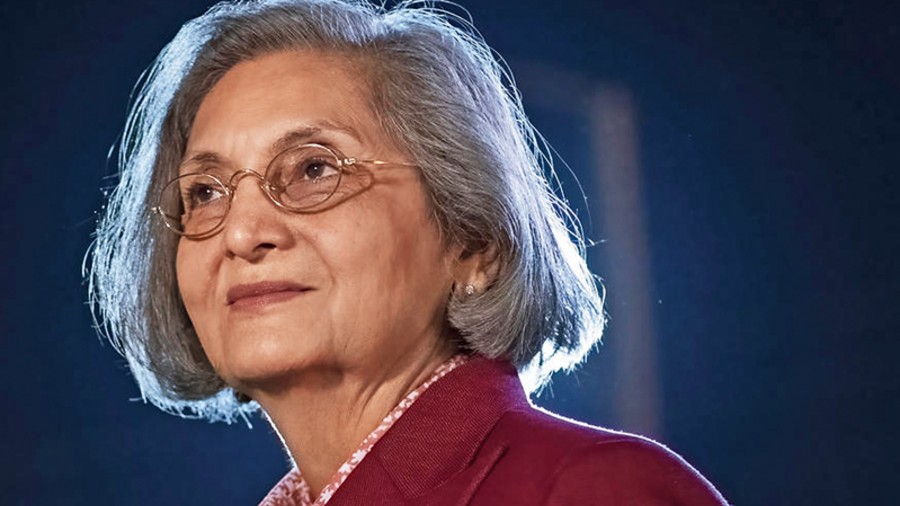Ma Anand Sheela — born Sheela Ambalal Patel and now known as Sheela Birnstiel — is a figure whose life and deeds continue to intrigue. As a 21-year-old, Sheela became a follower of Indian mystic and guru Bhagwan Shree Rajneesh. She quickly rose through the ranks to become one of his closest aides, not only fulfilling the role of his secretary, but also assuming the role of the spokesperson of the Rajneesh Movement.
Feisty and sharp-tongued, Sheela — who had become Ma Anand Sheela by then — spearheaded the building of Rajneeshpuram in Oregon in the US in 1981. Sprawled over an area of 64,229-acre, Rajneeshpuram, which drew followers of Rajneesh from all corners of the globe, was a thriving city in itself for seven years, with a fire department, a police force, restaurants, malls, townhouses, an airstrip, a public transport system using buses, a sewage reclamation plant, a reservoir and a post office with a ZIP code, all of which was the handiwork of Sheela, giving her almost absolute power. What we eventually saw was a badass Sheela, mostly sporting a pantsuit and boots who not only took on the media, but also an entire country that objected to the existence of Rajneeshpuram. A permanent smile, a flurry of cuss words and a certain fearlessness, even when up against the biggest odds, defined her.
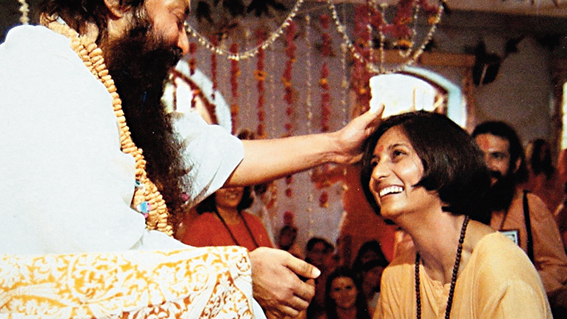
Sheela with Bhagwan Shree Rajneesh Sourced by the correspondent
However, the dream died soon. Sheela reportedly decamped one day with millions and some of her closest aides, with Rajneesh accusing her of fraud and treachery. The United States government held her responsible for the biggest immigration fraud in US history, the biggest wiretapping incident in US history and the most serious case of mass poisoning in US history. She pleaded guilty to attempted murder and assault for her role in the Rajneeshee bioterror attack and served 39 months in prison. By then, Rajneeshpuram was an abandoned city, with Rajneesh — who took on the name of Osho after coming back to India — passing on in 1990. In 1999, Sheela was convicted by a Swiss court of “Criminal acts preparatory to the commission of murder” in relation to a plot to kill US federal prosecutor Charles Turner in 1985.
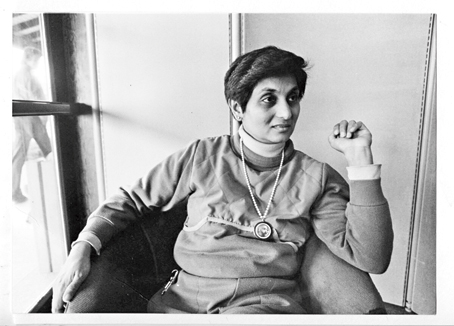
Sheela in her younger days Sourced by the correspondent
Today, Sheela lives in Switzerland, where she runs two care homes that look after the aged and the differently-abled. After making an appearance in the explosive 2018 Netflix documentary series Wild Wild Country, that traced the growth of Rajneeshpuram and its subsequent downfall, Sheela now features in the documentary film Searching for Sheela, a 58-minute watch, streaming on Netflix, that follows the 71-year-old around as she comes back to India after 35 years.
Sheela — always smiling and warm, but still feisty and now a woman of far lesser words — spoke to t2oS about her younger years, how her love for Rajneesh hasn’t diminished and why she has no regrets about the controversial life she’s lived.
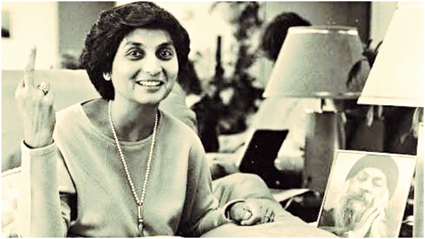
Showing her trademark middle finger to the world Sourced by the correspondent
Sheela, what were your primary emotions when you first set foot in India after 35 years of being away?
I must say I was overwhelmed. It felt like I was returning to a world I had left behind. I couldn’t immediately decipher my feelings because I was so overwhelmed. I saw a lot of changes though. There were way too many people around, especially at the airport. Then, the noise (smiles). I was welcomed with a lot of affection by people I had not known before. Though I had accepted the invitation to go to India, I actually didn’t know what to expect. What I experienced was out of the world.
What was the most emotional moment of your homecoming?
When I went to my childhood home (in Baroda) and saw my father’s jhula (swing). It almost felt like I was with my Ma and Bapuji there. I can’t explain that feeling. It was such a simple, divine moment. That really overwhelmed me immensely. In fact, it brings tears to my eyes (breaks down) even when I think of that moment.
And then, everything else I experienced when I went back to India was of newness. I had never been a part of social circles in my entire life. I was made to interact with the elite of India, and I was amazed at how little I knew of these things and was never a part of it. And then suddenly, I was placed there. But I enjoyed every moment of my journey.
Even the curious questions about your life, which you have often dismissed as annoying?
I have now made it a game with myself... how can I answer the same questions differently, in a different dimension (smiles) and more creatively. It was good for my brain, they helped in sharpening it.
At 70-plus, is Sheela still searching for herself?
I find myself every day anew. It’s not a one-time job... it happens every moment. I look within all the time and reassess myself and continue forward. Every day I am happy with what I find.
Is there anything about yourself that surprises you even today?
A lot of things. I go back to the time when I became secretary to Bhagwan (Rajneesh). I had no idea how to be a secretary (smiles). I didn’t have any secretarial skills... and he never allowed me to take notes! And, I had never built a city or managed a commune.
Now when you look back and think that you built an entire city in the US single-handedly, does it overwhelm you?
Yes, it does. And then I ask myself, ‘How could you be so stupid?!’ (Laughs)

Sourced by the correspondent
The badass attitude of your younger years — the foul language, the showing of the middle-finger, calling America a ‘bigoted nation’, endorsing free sex and ruling over Rajneeshpuram with an iron hand — was that a persona that you had to create to become Ma Anand Sheela?
That is true. When you are protecting a community and an asset like Bhagwan, you have to show your strength. I was trained by Bhagwan himself to be quick and witty. This is one of the biggest conflicts that my siblings have. They could not understand what they were seeing me as on television. They would call me up and say, ‘Stop being rude with the media!’ And I would tell them, ‘Don’t give me advice, I have another adviser, and that’s my boss Bhagwan’. I had to carry out the role, no matter what. I had to play the role. Life is the biggest act. That act never troubled me, because I embraced it. And even now, that’s why I can enjoy life so well.
But you must have also been inherently fearless because that’s not something anyone can teach you...
I learnt it from my father (Ambalal)… he was very fearless. My mother (Maniben) was a picture of love. So I had both those qualities. I also had a sense of practicality from them.
Would you still say something like ‘tough titties’, that you became synonymous with?
Why not?! (Laughs) I don’t find it wrong at all! I have not been attached to ‘tough titties’ and neither have I been detached from it. In that moment, I felt that was the right thing to come out of my mouth. Honestly, I had forgotten about it for many years. But the world hasn’t! (Laughs)

Sourced by the correspondent
What was the most challenging and the most fulfilling part of playing the ‘role’ of Ma Anand Sheela?
The most fulfilling part was looking into Bhagwan’s eyes, listening to him and being in love with him. To be able to understand his dream and how to carry it out. We wanted to create a new idea of the world. It sounds unachievable, but we did it.
I hated the negativity of the media. The eye of the media on me was very negative and very doubting. When I would disclose it to Bhagwan, what he told me calmed me and put me back to this state of enjoying my work and my duties at Rajneeshpuram. He taught me how to enjoy the media, and that’s what I still do (smiles).
What makes you still so devoted to Rajneesh, despite the fact that he called you a ‘criminal’ publicly, disowned you and said that he didn’t have sex with you because he ‘doesn’t have sex with a secretary?’
I really don’t know. All I can say is that it’s because of the feeling of love I had for him.
And that hasn’t diminished at all?
Not at all. If love diminishes, then it’s not love.
What was going through your mind when you finally visited the site of his cremation in Pune?
It was my final goodbye to him. I couldn’t be there when he passed away to salute him and to thank him for all that I had been showered with. It was a special moment.
Rajneesh was Bhagwan for the world. What side of him as a human did you get to see?
I saw him as a man, a very capable man. It didn’t disturb me if he blew his nose because that showed me that he was human. He was just a human like you and me. He even had toothaches! (Laughs)
People have built an image of you in their minds, which is largely not complimentary. You have published a memoir, but why don’t you attempt to tell your truth more forcefully? Or do you enjoy being this enigma?
I have said it in my biography (Don’t Kill Him: The Story of My Life with Bhagwan Rajneesh) in 2010. Honestly, my truth doesn’t seem appealing to people. That’s because it doesn’t fit in with the opinion that they have made of me. People write to me, they also tell me, ‘You say the same things’. I tell them, ‘Your questions are the same!’ (Smiles) My life is the same, it hasn’t changed. I worked for Bhagwan before, and now I work for myself, but not much has changed.
I was in prison for 39 months. But people say I was given a sentence of 20 years. When?! It was for four-and-a-half years, and I was allowed to leave after 39 months. I have tried to explain this so many times, but no one listens. So now I know that people only believe what makes them happy, not what my reality is (smiles).
What’s the most annoying question that you are asked repeatedly?
There are quite a few. One of the most favourite ones is that whether the work I do now is some sort of redemption. Then I have to say that if being in love requires redemption, then nobody should be in love.
Do you have any regrets about the life you have lived?
Nothing at all. I think I have led a wonderful life, and I continue to do so. What regrets could I have?
What did power mean to you then and what does it mean to you now?
The same thing. I am not guided by power, nor am I guided by lust for money. Yes, I live a comfortable life and I have worked hard for this life. But it’s not my motivation.
What’s your motivation?
Love. Being there for the world, for my people....
If you could speak to the Sheela of 30 today, what would you tell her?
I will tell her exactly what I tell myself now. Be involved 100 per cent in whatever you do.
How would you like Ma Anand Sheela to be remembered as?
I have no legacy as such. I am just happy to be who I am, in all the roles I have played.
And Osho’s legacy?
That’s something he has to decide, not me. I live his teachings every day, and I will do so till the last day of my life. Once I am gone, it doesn’t matter.
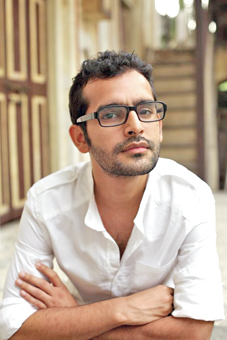
Shakun Batra, the man at the helm of Bollywood films like Ek Main Aur Ekk Tu and Kapoor & Sons, has executive-produced Searching for Sheela, that’s produced by Karan Johar’s Dharmatic Entertainment. Excerpts from a chat with Shakun...
The impetus
I have been fascinated by Sheela and Osho’s story ever since I was young. My parents were believers of Osho and I have been hearing about Osho and Sheela for a very long time. I had met her in Switzerland before Wild Wild Country and I had gone there to ask her questions, like everybody else. After a while, I heard she was coming to India, and we decided that this would be a great time to follow her around. Now that she has this new spotlight on her, I wanted to try and understand how she felt about this homecoming trip after 35 years.
The discovery
We titled the film Searching for Sheela and very recently she asked me, ‘So, did you find Sheela?’ It made me chuckle. I don’t think 58 minutes can do justice to finding a person who’s lived such a vast life. Our effort is not to give answers, it is to give people a more intimate look at someone who they saw in Wild Wild Country and in interviews and archives. We wanted to capture her today and what she feels with so many questions around her, and with such varied opinions about her... what does it feel to navigate through that crowd.
Reconciling the two sides of Sheela
We are everything at the same time. She is still the Sheela who once built Rajneeshpuram and was known for her one-liners. And she’s the Sheela of today. For me, the interesting part is not today or yesterday... it’s to see the same person in different dimensions. Her life and Osho’s life presents a great observation of human nature, of complexity, of goodness, and all the craziness that comes with it.
Making Sheela’s biopic
There have been conversations. There is a TV series that’s currently in development. I am finishing my film (starring Deepika Padukone) and once that’s done, we will get down to writing this. It’s an ambitious project and let’s see how it goes.
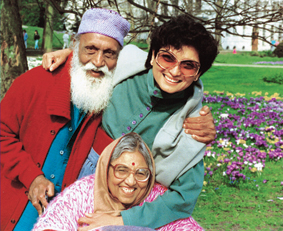
Sheela with her parents Ambalal and Maniben Patel Sourced by the correspondent

Walking beside Osho at Oregon Sourced by the correspondent
